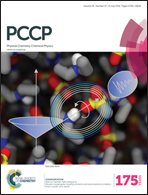Metal ion–humic acid nanoparticle interactions: role of both complexation and condensation mechanisms†
Abstract
Purely Donnan type models for electrostatic binding by humic acid (HA) nanoparticles are shown to be physically incomplete. To describe the extent of ion binding by HA, such models need to invoke parameters that are not consistent with experimental observations. These disparate parameters include anomalously high Donnan potentials, as well as intrinsic affinity constants for electrostatically associating ions such as Ca2+. In contrast, the recently introduced counterion condensation – Donnan model (CCD) provides a physicochemically realistic description of the electrostatic contribution to metal ion binding by humic acid nanoparticles. The extent of Ca2+–HA association can be adequately described solely in terms of electrostatics only, including counterion condensation in the intraparticulate double layer in addition to Donnan partitioning in the remainder of the particle body. The binding of Cd(II), Pb, (II) and Cu(II) by HA also involves inner-sphere complex formation leading to intraparticulate metal species distributions with major proportions of condensed and complexed ions.


 Please wait while we load your content...
Please wait while we load your content...